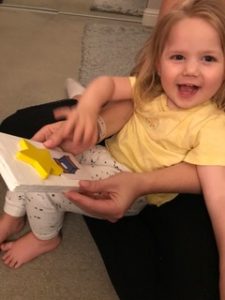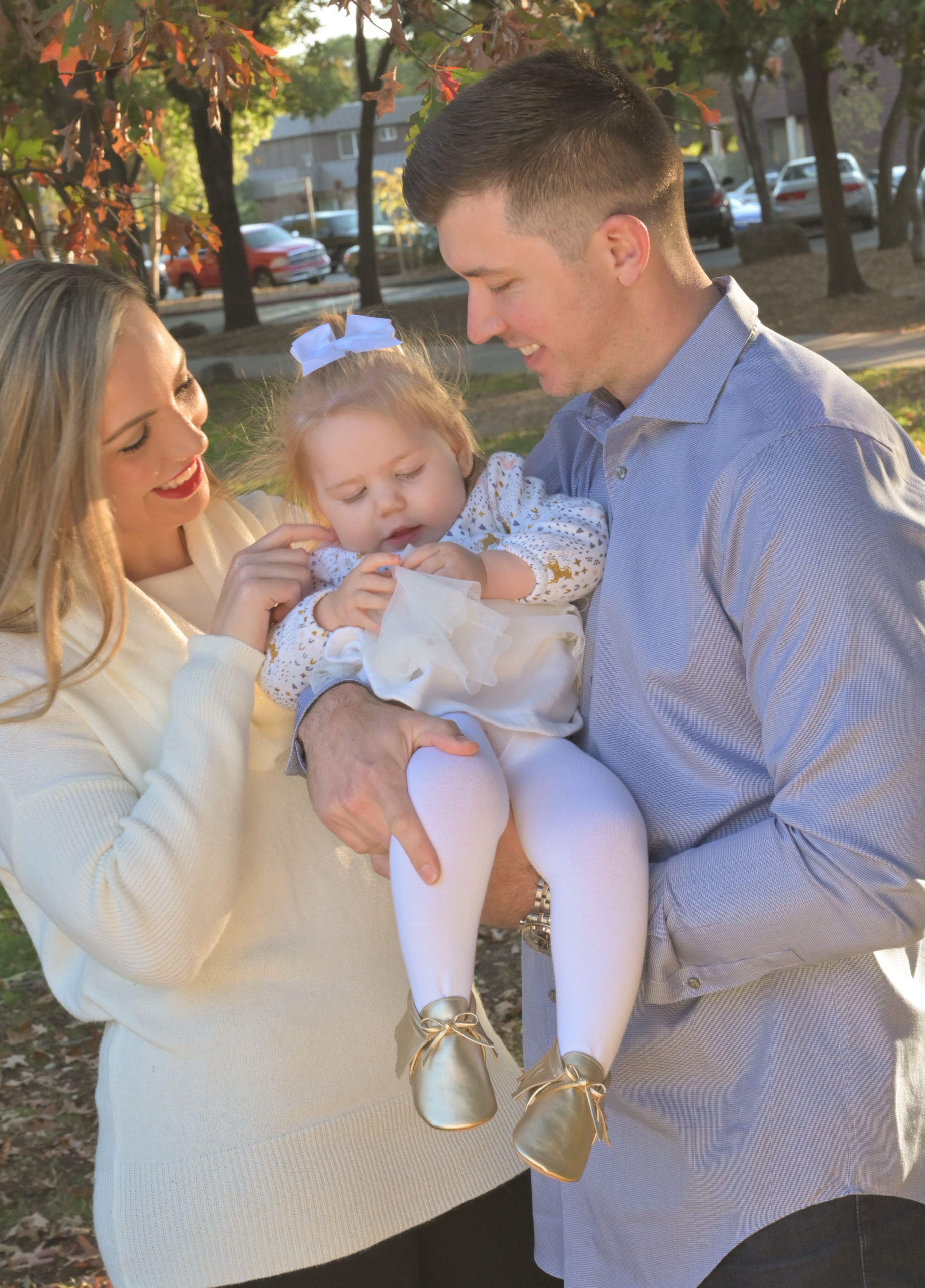A simple song and a little star produced a tremendous breakthrough for Harper, a two-and a half-year-old girl in Wayfinder’s Blind Babies Foundation program. When Harper was a few months old, her parents, Kellie and Jason, began to see clues that something was wrong with their baby. She wasn’t following objects with her eyes or rolling over. Harper was diagnosed with a very rare genetic disorder called FOXG1 syndrome that affects all areas of physical and brain development.

Drue Banister, a Wayfinder vision impairment specialist, took on Harper’s complex case when she was 10 months old. Drue made Harper a little area out of PVC pipe that contained toys and tactile objects to encourage her to reach and use her motor skills. Drue used high-contrast images and a table with a lighted top to improve Harper’s vision.
At age 2, Harper was making good progress with her visual and physical skills … but she wasn’t speaking. Harper couldn’t say what she wanted or needed. Her parents and Drue agreed that Harper understood more than she could express. How could they give Harper a way to communicate?
Drue suggested object communication, in which things symbolize activities (read more about Drue’s special connection to object communication in her Wayfinder profile. Kellie says, “I thought it was really creative.” Kellie selected a few objects, and Drue attached them to small cards: a spoon for mealtime, bells for listening to music, a washcloth for bathing—and a star for bedtime. Kellie chose the star because every night she sings “Twinkle, Twinkle, Little Star” to Harper before tucking her into bed.

For eight weeks, Kellie consistently gave an object card to Harper before each of the four activities. One night, Kellie again showed Harper the star before singing “Twinkle, Twinkle”—and Harper began to cry. “She didn’t want to go to bed. She was protesting,” Kellie recalls. “It was exciting as a parent because this is just the beginning of where we are going with her communication.”
Five months later, Harper has object cards for most of her routines. In October, Kellie began introducing Harper to choice—selecting one of two objects to indicate the activity she wants next.
During the pandemic, Wayfinder is continuing Harper’s sessions through video calls—because every day is crucial for children like Harper. “Harper adapted to seeing Drue onscreen and still continues to make gains,” says Kellie. “But I can’t sugarcoat it. The pandemic has been a challenge.”
“Emotionally, it’s been overwhelming having a child who isn’t developing normally,” Kellie says. “But Wayfinder took a genuine interest in helping my child. I can’t say enough good things.”
PLEASE MAKE A GIFT TODAY
Your generous donation supports Wayfinder’s work with children like Harper at www.wayfinderfamily.org/harper
November 25, 2020


